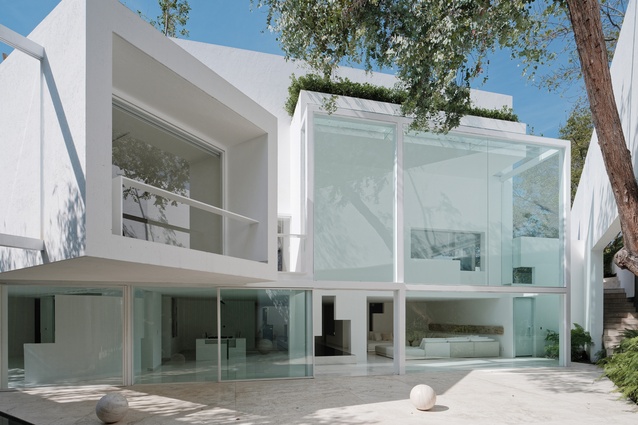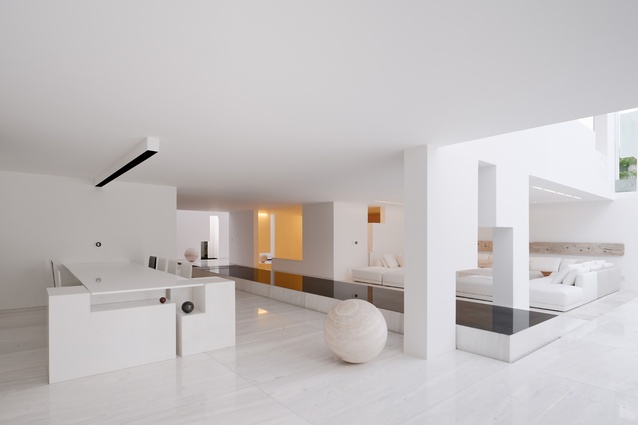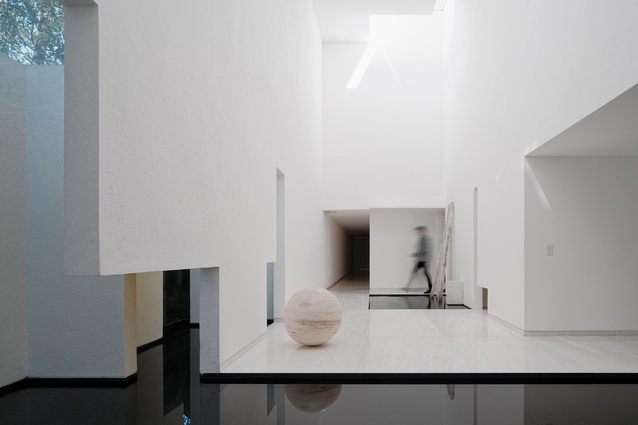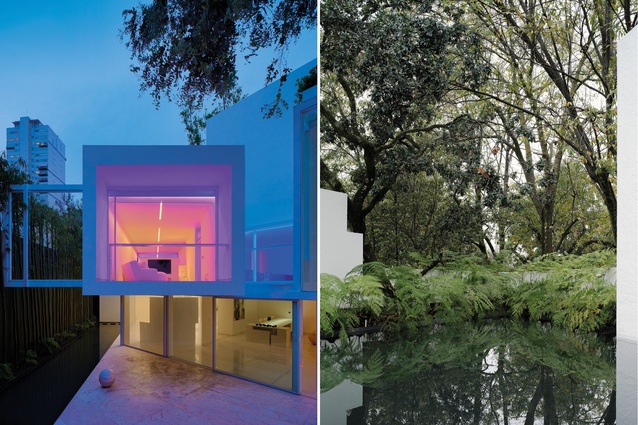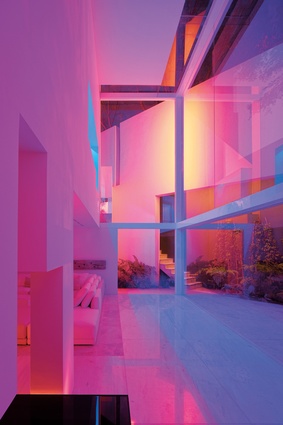Afterglow: Casa Aragonés
When day becomes night, the true colours of this Mexican home come out to play.
“One might not think of light as a matter of fact, but I do. And it is, as I said, as plain and open and direct an art as you will ever find.” So said American minimalist Dan Flavin.
He was a creator of fluorescent light fixtures, more sculptures than anything else, and his words were made for a world of galleries illuminated by artificial tubes. Miguel Ángel Aragonés’ home – similar, in the way that it unfurls, to a gallery – is exemplary of this dictum.

There is nothing explicitly complicated about Aragonés’ all-white residence in Mexico City. By day, parapets and slight deviations from the orthogonal cut into an otherwise restrained interior, pared-back to the point of extreme elegance and glossy to varying, beautiful degrees. On the ground floor, linear ponds and an elevated, catwalk-like platform act as mirrors, sitting still like dark, cubist pools. Set against them, stone spheres, dotted here and there as if by whim, balance this compositional whole.
At first glance, all of this – the restraint, the simple lines – appears to have been created with modernism in mind. But Aragonés, an architect at design studio Taller Aragonés, tells it differently. “The style is something you never choose,” he admits of this, his own house.
“It comes to you because it’s the cleanest and easiest way to create spaces here in Mexico; it has always been done with thick walls and heavy volumes.” Here, such a structure is softened by the garden, which enters the house through various light-wells, casting green shadows across the most reflective surfaces.

Aragonés professes an admiration for architect Luis Barragán, not, as one might expect, for his use of interior water features or sharp geometries but for his ability to execute walls with simplicity and expression, and for the assertiveness of his character. “We have many influences from the past but, like poet Octavio Paz said, ‘It has to be seen indirectly’.” The thought of using ideas from professional predecessors in order to express yourself sits well with Aragonés. “I am of the opinion that you don’t have to ask, just take [them]… During his time, Barragán did the same.”
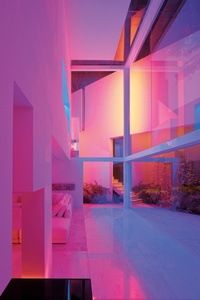
When the sun goes down in this Bosques de las Lomas neighbourhood (one of Mexico City’s leafiest and most exclusive areas), the extent of this belief system becomes clear, for a change – influenced, to some degree, by the artists (perhaps better called masters) of light – emerges from behind the property’s wall of bamboo, and oak and ash trees. The characteristic munitions of the modernist style are transformed; dazzling white travertine and pale stone become a canvas for the soft glow of multicoloured LEDs. “The day is white; the night is black,” Aragonés stresses. “Why try to imitate the light of day… if nature already gives you two hugely different possibilities?”
It’s easy to imagine Ólafur Elíasson, James Turrell, Don Flavin or other like-minded artists finding comfort here after sundown. It would be a familiar world to them, in part because of its remarkable play with negative space and in part because of its visual drama. “I saw the potential of light to create an atmosphere, not to create a landscape on the back; the difference is that the first one evolves as you are inside of it,” Aragonés explains. “Flavin was the creator of lines with light. Maybe it’s a small homage to him.”
For a home with five bedrooms, eight bathrooms, two kitchens, three dining rooms, a theatre, a sunroom and a gym, among other luxuries spanning three levels, “small” is something of an understatement. “Maybe” is, too. But Aragonés’ meaning is spelled out in his work.
This article first appeared in Urbis magazine.



